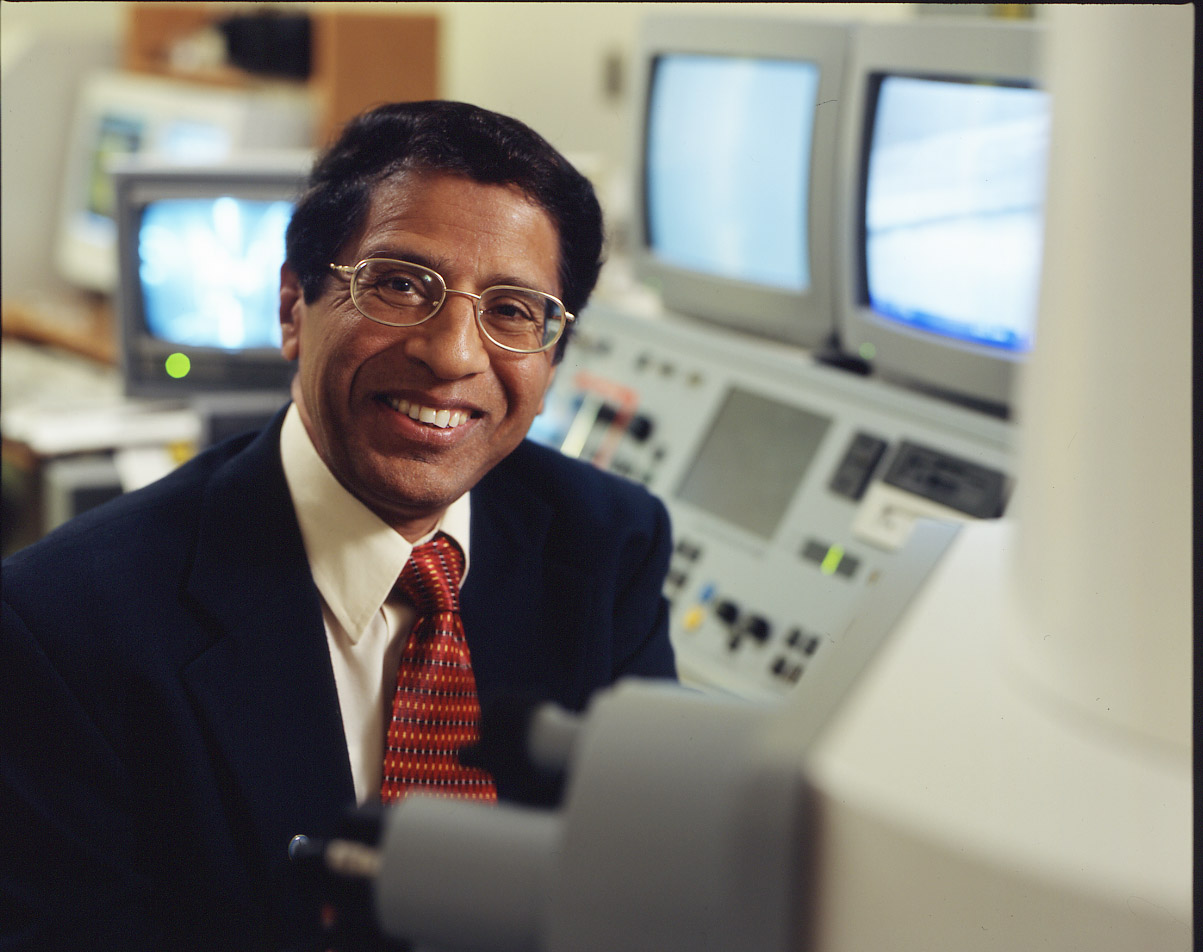Aug. 4, 2008 — Solar cells of the future may look totally black to the human eye because they absorb light so efficiently. That's the promise of new research from an interdisciplinary team at the University of Virginia being funded by a new U.Va. Collaborative Sustainable Energy Seed Grant worth about $30,000.
While current solar cells reflect about 5 to 10 percent of the light energy that reaches their surface, the U.Va. team will use lasers to create tiny nanoscale surface textures that reduce that energy loss to less than 1 percent, over the entire solar spectrum and irrespective of the angle at which sunlight strikes the cell.
While increasing the ultimate efficiency of solar cells, this laser texturing process could also drive down manufacturing costs. Because lasers are already used in the manufacturing of solar cells, the texturing process can be automated, eliminating the need for dangerous chemical treatments currently used to reduce reflectance (without which the cells would reflect approximately 30 percent of light energy).
While current solar cells reflect about 5 to 10 percent of the light energy that reaches their surface, the U.Va. team will use lasers to create tiny nanoscale surface textures that reduce that energy loss to less than 1 percent, over the entire solar spectrum and irrespective of the angle at which sunlight strikes the cell.
While increasing the ultimate efficiency of solar cells, this laser texturing process could also drive down manufacturing costs. Because lasers are already used in the manufacturing of solar cells, the texturing process can be automated, eliminating the need for dangerous chemical treatments currently used to reduce reflectance (without which the cells would reflect approximately 30 percent of light energy).
|
The resulting texture of 'nanospikes,' said Gupta, is like the sand on sandpaper — the added hills and valleys greatly increase the surface area and reduce the reflection of light. However, the 'nanospikes' are many times smaller than the sand of sandpaper (nanospikes range in height from 10 to 100 millionths of a meter) and are more precisely shaped.
The 30 percent gain in light absorption from the nanospike surface may enable the creation of solar cells that are ultimately 2 percent to 3 percent more efficient than current technology, Gupta said. That may not sound like much, but "in the solar industry a 1 percent efficiency improvement is a big deal," noted Gupta, who is also the director of the National Science Foundation's Laser Industry/University Cooperative Research Center. "I'll be happy if we can get 2 to 3 percent more efficiency."
Such incremental gains in efficiency and reduced manufacturing cost are helping drive the rapid growth of solar energy, a market that is growing about 40 percent per year in recent years, spurred in part by rising oil prices, Gupta said.
Even with such rapid growth, solar power still only accounts for a tiny fraction of the world energy supply. "It's not like solar is trying to take the place of oil," Gupta said. "But if, in 20 to 30 years, solar can provide 5 to 10 percent of the world energy supply, then solar would be a huge industry – bigger than the entire microelectronics industry," which includes all the computer chips in today's cars, phones, appliances and buildings, as well as the chips in computers.
Gupta's U.Va. partners in this research are Keith Williams, an assistant professor of physics with expertise in measuring the characteristics of surfaces, and Joe Campbell, a professor of electrical and computer engineering, member of the National Academy of Engineering and an expert in optics and electronics fabrication.
Gupta's team will use the research results enabled by this seed grant to create a better application for larger grants from the Department of Energy and the National Science Foundation.
"It's important to have some initial data to demonstrate the promise of the research, beyond just a theory," said Gupta, who hopes that his tiny 'nanospikes' can be a part of the solutions to the grave energy issues of our time. "The scientific community really needs to gear up to address energy issues that have a big impact on our society."
Media Contact
Article Information
August 4, 2008
/content/uva-team-developing-black-solar-cells-greener-future

